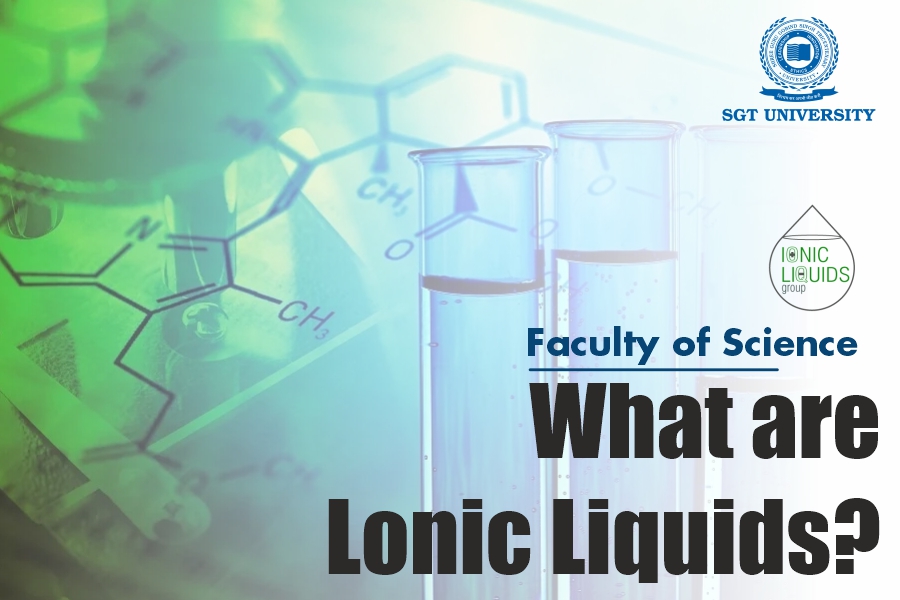Ionic liquids (ILs) are entirely made up of ions and have a melting point below 100°C. Paul Walden reported the first IL (Ethylammonium nitrate) in 1914, but he had no idea that it would become a significant scientific field over a century later. In fact, ILs as novel fluids have only recently attracted widespread attention.
The number of SCI articles published on ILs has expanded rapidly from a few in 1996 to more than 6000 in 2020, outpacing annual growth rates in other major scientific fields.
It shows that many researchers are working on this fascinating topic, with several results. Chemistry, Materials Science, Chemical Engineering, and Environmental Science contribute to a multidisciplinary study on ILs.
As understanding the nature of ILs deepens, certain crucial fundamental ideas are now different from the original concepts. The physicochemical features of ILs, for example, are currently recognised as ranging from nonvolatile, nonflammable, and air and water stable to those that are distinctively volatile, flammable, and unstable.
This is due to a variety of cations and anions that match the criteria of Ionic liquids, resulting in a wide range of behaviours. Ionic liquids are still preferred over traditional volatile solvents or catalysts in many physical and chemical processes, and they often have useful “green” and “designer” features.
As their chemical diversity has increased, Ionic liquids have been subdivided into numerous types, such as room-temperature ILs (RTILs), task-specific ILs (TSILs), polyionic liquids (PILs), and supported IL membranes (SILMs), which include composites of ILs supported on metal-organic frameworks (MOFs).
The hybrid organic–ionic nature of Ionic liquids and the resulting intermolecular interactions give rise to a complex set of phenomena, creating a fascinating and challenging area of study. Scientists and engineers are frequently required to rapidly screen for suitable ILs for a specific process.
Also Read: What is Crime and Who is a Criminal?
Selective oxidation is used extensively in environmental and green chemistry (for example, oxidative desulphurisation of fuels and oxidative removal of mercury), as well as in chemicals and intermediates chemistry to produce high-value-added special products (e.g., organic sulfoxides and sulfones, aldehydes, ketones, carboxylic acids, epoxides, esters, and lactones).
Ionic liquids (ILs) have attracted considerable attention as reaction solvents and media for selective oxidations due to their unique physical properties such as nonvolatility, thermal stability, non-explosion, high polarity, and temperature-dependent miscibility with water.
Read Also: What is Green Chemistry?
They are also considered green alternatives to volatile organic solvents. Furthermore, IL catalysts have received unprecedented attention for easy separation, and recyclable utilisation as “biphasic catalysts” or “immobilised catalysts” by immobilising metal- or nonmetal-containing ILs onto mineral or mineral polymer supports to combine the unique properties of metals and nonmetals.
Before I begin the research, I must express my admiration for Ionic Liquids. Ionic Liquids are nothing but everything; it gives a new era of research in chemistry and chemical biology. After conducting a thorough literature review, I discovered that it is an interesting and important topic in science.
There have been numerous reports in the literature of organic synthesis using hazards, chemicals, high temperature, high pressure, and other materials. The use of ionic liquids eliminated these drawbacks.
In the Department of Chemistry, Faculty of Science at SGT University, we have a step-up laboratory where you can learn about ionic liquids and their applications as drugs and catalysts.
The Faculty of Science, SGT University, is one of the best colleges in Delhi NCR for science courses. The faculty has five departments: Department of Physics, Department of Chemistry, Department of Mathematics, Department of Forensic Science, and Department of Environmental Science. The Faculty of Science offers 12 courses – 2 Undergraduate, 5 Post Graduate, and 5 PhDs.
Written By:-
Dr. Ravi Tomar
(TARE-Fellow, IIT Delhi)
Assistant Professor
Department of Chemistry
Faculty of Science
SGT University




